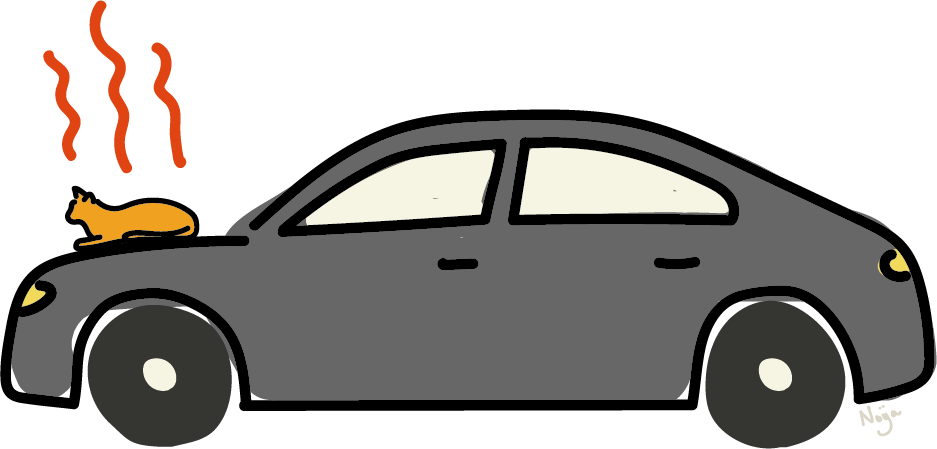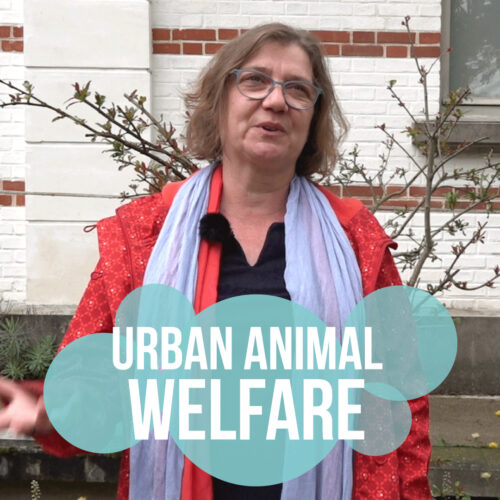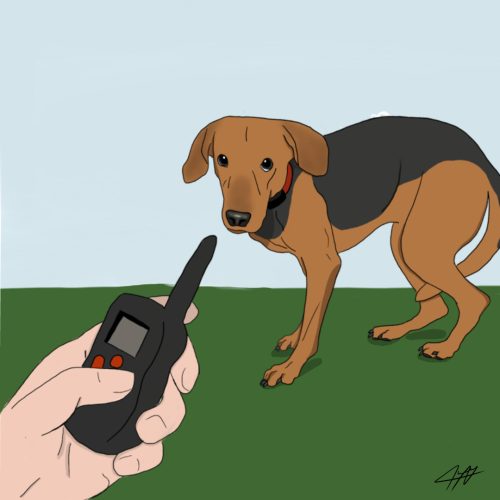

FALSE
Stray cats must be tended to (i.e. identified, sterilized, treated), for their own welfare, and for biodiversity and public health reasons.
Find out more in this video report, followed by a text!
Keep in mind
- A stray cat is a cat without an owner or keeper, on its own in a public place. It becomes a "free cat" after being sterilized and registered under the name of a municipality or association.
- Stray cats are rarely in a state of welfare: hungry, thirsty, sick, injured. Their uncontrolled proliferation has an impact on health and biodiversity.
- The mayor is responsible for feline straying in his or her municipality, and sterilizing stray cats is a matter of public policy.
Although a systematic study has yet to be carried out, it is estimated that there are almost 11 million stray cats in France today[1], almost as many as the 14.9 million pet cats estimated in 2021[2]. On their own, these cats are generally free to come and go in our towns and countryside. Some might say they’re happy like this! But is it really so? What of the problems posed by feline straying, which is increasingly becoming a matter of public policy – particularly under pressure from animal protection associations?
What is a "stray" cat?
According to the French Rural Code, “any unidentified cat found more than two hundred meters from dwellings, or any cat found more than one thousand meters from its owner’s home and not under the owner’s immediate supervision, as well as any cat whose owner is unknown and which is seized in a public place or on private property, is considered to be loitering“. . » (article L.211-23)
Thus, a stray cat, in the legal sense, can be either a cat that has escaped its owner/caretaker’s supervision[3], or a cat without an owner/caretaker who is in a public place. However, when speaking of feline straying, we often refer only to ownerless cats left to their own in a public place[4].
These stray, ownerless cats were probably born from abandoned cats that have not been sterilized, or from unwanted litters of kittens from cats that do have a keeper, but have not been sterilized.

Did you know?
A single pair of cats can give birth to as many as 20,000 cats in 4 years!

Are stray cats happy?
If you see a cat freely “frolicking” in the fields or on the street, you may think it’s lucky to live free, hunting and indulging its instincts… but is it really so?
In reality, stray cats are rarely in a state of welfare. In fact, they face many risks, some of which were highlighted by the National Reference Center for Animal Welfare in its report on abandonment.
Stray cats are subject to parasitism (ticks, fleas, intestinal worms) and can transmit numerous diseases and infections (FIV, FeLV, coryza) that can affect their state of health[5], or even lead to their death. . It’s not uncommon to see litters of kittens decimated by coryza, a common and highly contagious respiratory disease, which can also attack cats’ eyes and mouth, depending on the virus involved.
Often living close to homes, stray cats are also prone to road accidents, which can lead to death or long-term impairment (loss of limbs, eyes, badly healed fractures, etc.). Because unsterilized cats are territorial, they often fight among themselves, resulting in wounds and infections. They can also be attacked by other animals (dogs, foxes, etc.). Finally, in urban areas, some local residents disturbed by the presence of cats may use violence against them.
Stray cats are also subject to the vagaries of weather, having to cope with the cold in winter and the heat in summer.

Did you know?
It is not uncommon in winter for a cat looking for a little warmth to take refuge in a car's still-warm engine. Don't forget to give the hood of your car a gentle tap before you set off!

Finally, the question of access to food and water also arises for stray cats. Contrary to widespread belief that cats can fend for themselves outside by hunting, in reality many of them suffer from hunger and thirst in times of drought. This is all the more true since Departmental Health Regulations[6] often forbid the feeding of stray cats, which can result in a fine.
Overall, the stray cat mortality rate is estimated at 75% at 6 months[7].
What impact do stray cats have on public health and biodiversity?
Stray cats can pose public health problems, but also impact local biodiversity.
If, despite the ban, people feed them, food may attract other liminal animals[8] such as rats – which can transmit diseases to humans. In the absence of feeding, cats can also rip open garbage cans[9], which can also attract these animals. The question of transmission of zoonoses from cats to humans is also relevant (intestinal parasites, toxoplasmosis, rabies, etc.) – even if the risk appears to be limited in France (France is free of rabies) and studies suggest transmission for intestinal parasites and toxoplasmosis is not very significant.[10].
Aside from the public health issue, there is also that of biodiversity. Cats are predators for many species (birds, rodents, reptiles, insects). According to the LPO, “in 2020, over 14.3% of the animals cared for in the seven LPO care centers had been predated almost exclusively by cats: 90% of which were birds and 10% mammals”[11]. Even if these numbers include domestic cats that go outside, an increase in the stray cat population, if left unchecked, could mechanically increase this incidence.

However, while several studies carried out abroad have confirmed the negative impact of cats on biodiversity[12]this must be put into perspective and modulated in relation to the impact of humans on biodiversity (over-exploitation of land, pesticides which lead to a reduction in the number of insects serving as food for birds, removal of hedges, etc.). According to Anne-Claire Gagnon, a veterinary surgeon and behaviorist specializing in feline, cats are often “the scapegoat for the harmful effects of pollution, pesticide use and out-of-control urban development, with no regard for the preservation of nature in the broadest sense”[13].
While it’s important to take into account cats’ impact on wildlife, it’s also important to understand the issues involved. Thus, to gain a better understanding of the cat’s place in ecosystems and its link with small wildlife, a participatory research program was launched in 2015 by the French Society for the Study and Protection of Mammals, among others[14].
Is anyone responsible for stray cats?
So who is responsible for these stray cats, since by definition they don’t belong to anyone?
Under the French Rural Code, stray cats are the responsibility of the mayor, who is required to take all necessary measures to prevent the loitering of cats (article L. 211-22 of the French Rural Code). The mayor is also required to take prompt action against any stray animal found in an accident, including stray cats (article R. 211-11 of the French Rural Code).
In order to do this, the municipality must provide animal pound services for stray cats in its custody (articles L.211-22 and L. 211-24 of the French Rural Code). In the absence of identification and after 8 working days, if no owner has come forward, the cat taken to the pound can be put up for adoption or euthanized. In view of the lack of space and the often unsocial nature of these animals, euthanasia is still relatively common.[15]. Since the decree of April 3, 2014, however, “unidentified cats, without owner or keeper, living in groups in public places on the territory of a municipality, may be captured only at the request of the mayor“, and then impounded only if an “identification and sterilization program cannot be implemented”[16]. The aim of this provision is to limit stray cat euthanasia, in favor of alternatives deemed effective[17] such as sterilization.

Did you know?
Run by associations, shelters are places where people can abandon or adopt animals. Animal pounds are places where stray animals are brought. As municipalities do not always have the necessary space or staff, this service is generally outsourced to a private company or an association after a competitive bidding process. Thus, in practice, shelters can be authorized to impound animals.

In fact, the French Rural Code allows mayors, on their own initiative or at the request of an animal protection association, to “capture unidentified, ownerless or keeperless cats living in groups in public places in the municipality, in order to sterilize and identify them […] before releasing them in the same places. This identification must be carried out in the name of the municipality or the said association.. ” (art. L. 211-27 of the French Rural Code). Cats taken into care in this way are referred to as “free cats“. A stray cat therefore becomes a free cat once it has been registered under the name of a city hall or an association, sterilized and put back where it was captured[18]. The “free cat” status offers the animal additional legal protection, as it is now the owner (city hall or association) who is responsible for its care (food, veterinary care). Sterilization also helps to curb the proliferation of cat populations.

However, due to the cost of capture and sterilization, few city halls actually implement large-scale sterilization programs. As a result, animal protection associations often carry out this work in the field on a day-to-day basis. Under pressure from associations, however, the issue is becoming a matter of public policy. Indeed, the November 30, 2021 law aimed at combating mistreatment (see our Decoding Article here), has asked the government to draw up a report with the aim of making a quantified diagnosis of the issue of feline straying and formulating “lasting and operational recommendations” Under the post-COVID “recovery plan“, the French Ministry of Agriculture has also financed 416 sterilization campaigns to the tune of 5 million euros[19]. In May 2021, it also created the Observatoire de la protection des carnivores domestiques (OCAD), piloted in part by the CNR BEA but also by 15 other organizations involved in the protection of domestic carnivores, and whose field of expertise covers, among other things, feline straying.
What can I do if I find a stray cat?
If you find a stray cat:
- If it can be approached, you may try putting it in a carrier and taking it to the vet to check for identification. If it has a keeper, the vet can contact them directly.
- If it can’t be approached, don’t take any chances:
- Contact your city hall, which is required to inform the public about the procedures for taking in stray animals (article R. 211-12 of the French Rural Code).
- Contact the city police.
- Ask your local animal pound to come and collect the cat.
- If its life appears to be in danger, call a vet for advice.
- You can also call an animal protection association, which will be able to advise you.
Please note that if the animal is located on private property, you cannot reclaim it without the formal agreement of the owner!
In short
Reviewed and corrected by Anne-Claire Gagnon, feline veterinary behaviorist.
[1] Figure taken from the One Voice report « Chats errants en France : état des lieux, problématiques et solutions »
[2] Nearly one household in three has a cat. See https://www.facco.fr/wp-content/uploads/2023/05/RAPPORT-ACTIVITE-FACCO-2023-WEB.pdf
[3]There is a difference between owning and keeping pets. The owner is the person whose name appears on the animal’s transfer certificate/certificate of sale/purchase invoice, while the keeper is the person with whom the animal usually lives and whose name is linked to the animal’s tattoo or electronic device: https://www.filalapat.fr/actualite/proprietaire-ou-detenteur-ne-faites-pas-derreur
[4] It should be noted that the characterization of cat ownership or possession is sometimes complicated to establish because, unlike dogs, as the CNR BEA notes in its report on abandonment (https://www.cnr-bea.fr/expertise-travaux/etat-des-lieux-sur-labandon-des-chiens-et-des-chats-en-france/), cats are not always systematically identified, despite the legal obligation to do so since 2012 (article L.212-10 from the French Rural Code).
[5] A study carried out in Spain showed that the parasitological and infectious risk was greater for stray cats than for domestic cats with owners. : Montoya A., García M., Gálvez R., Checa R., Marino V., Sarquis J., Barrera J.P., Rupérez C., Caballero L., Chicharro C., Cruz I., Miró G., 2018. Implications of zoonotic and vector-borne parasites to free-roaming cats in central Spain. Veterinary Parasitoly 251. https://doi.org/10.1016/j.vetpar.2018.01.009
[6] These are regulations issued by the prefect of each département. In practice, each prefect is free to adapt its own RSD, but they often adopt the same standard RSD set out in a circular dated August 9, 1978. Article 26 from the RSD « prohibits the systematic or habitual attraction of animals, particularly pigeons and cats, when this practice is a cause of unhealthiness or nuisance to the neighbourhood ” and article 120 stipulates that it is ” it is forbidden to throw or deposit seeds or food in any public place in order to attract stray animals, wild animals or animals that have become wild again, in particular cats or pigeons; the same prohibition applies to private roads, courtyards or other parts of a building when this practice is likely to constitute a nuisance for the neighbourhood or attract rodents “.
[7] Gagnon A-C., 2022. Cohabitation pacifique des chats et des oiseaux : utopie ou réalité ? Semaine vétérinaire 1748
[8] A liminal animal is an animal that is neither domesticated nor wild, living in an anthropized environment, close to man and in a certain interdependence with him.
[9See the One Voice report cited above
[10] Luzardo O.P., Zaldívar-Laguía J.E., Zumbado M., Travieso-Aja MdM., 2023. The Role of Veterinarians in Managing Community Cats: A Contextualized, Comprehensive Approach for Biodiversity, Public Health, and Animal Welfare. Animals 13(10). https://doi.org/10.3390/ani13101586
[11] https://www.lpo.fr/decouvrir-la-nature/conseils-biodiversite/conseils-biodiversite/accueillir-la-faune-sauvage/limiter-la-predation-des-chats-domestiques
[12] See for example Trouwborst A., McCormack P. C., Martinez Carmacho E., 2020. Domestic cats and their impacts on biodiversity: A blind spot in the application of nature conservation law. People and Nature 2(1). https://doi.org/10.1002/pan3.10073
[13] Anne-Claire Gagnon (2022). In fact, an international study based on the monitoring of 170 common bird species at 20,000 sites in 28 European countries, over 37 years, highlights the anthropogenic cause of bird decline, with 4 main causes: agricultural intensification, changes in forest cover, urbanization and temperature change. Voir Rigal S., Dakos V., Alonso H., Devictor V., 2023. Farmland practices are driving bird population decline across Europe. , The Proceedings of the National Academy of Sciences 120 (21). https://doi.org/10.1073/pnas.2216573120
[14] https://www.chat-biodiversite.fr/presentation-du-projet.html-2. See : https://www.chat-biodiversite.fr/sites/default/files/inline-files/SFEPM-ChatDomestique_et_micromamm_06_03_2021_Nathalie_de_Lacoste.pdf
[15] In 2016, in 86 shelters and 82 pounds, the euthanasia rate for cats was 10% in shelters and 36% in pounds, for all reasons combined: https://info.agriculture.gouv.fr/gedei/site/bo-agri/instruction-2017-638
Associations also regularly denunce the abusive euthanasia practices of certain pounds. See for example: https://france3-regions.francetvinfo.fr/nouvelle-aquitaine/lot-et-garonne/agen/onze-millions-de-chats-errants-des-fourrieres-peu-adaptees-une-atteinte-a-la-biodiversite-one-voice-reclame-un-plan-de-sterilisation-d-urgence-2571288.html
[16] Annexe 1 de l’arrêté du 3 avril 2013 : Unidentified, ownerless or keeperless cats living in groups in public places on the territory of a municipality may only be captured at the request of the mayor of that municipality. These animals may only be pounded if the identification and sterilization program provided for in article L211-27 of the French rural and maritime fishing code cannot be implemented.
[17] Luzardo et al. (2023). See also the One Voice report cited above
[18] In its report on abandonment, the CNR BEA defines a free cat as “a cat that has been identified and sterilized, but has no owner and lives in the wild. Its identification is associated with a legal entity that provides/finances its care (most often an animal protection association).” (p.7 of the report)
[19] https://www.cnr-bea.fr/2023/04/18/assemblee-nationale-reponse-chats-errants/
Keep in mind
- A stray cat is a cat without an owner or keeper, on its own in a public place. It becomes a "free cat" after being sterilized and registered under the name of a municipality or association.
- Stray cats are rarely in a state of welfare: hungry, thirsty, sick, injured. Their uncontrolled proliferation has an impact on health and biodiversity.
- The mayor is responsible for feline straying in his or her municipality, and sterilizing stray cats is a matter of public policy.
Key Figure
In France today, there are nearly 11 million stray cats, almost as many as the 14.9 million pet cats estimated in 2021.

If they’re injured or in poor health, feeding points make it possible to keep an eye on them. It’s a way of trying to take care of them.

MURIEL, NANNY WITH THE “LES CHATS DE LOYASSE” ASSOCIATION







